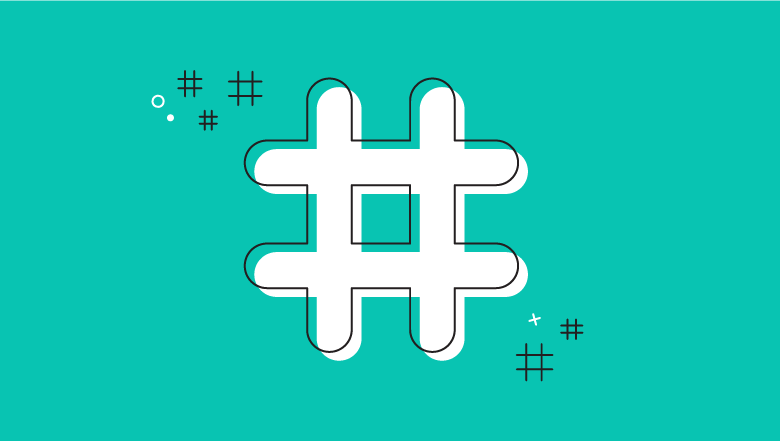
The Internet is an enormous, interconnected community of individual users. Web 2.0 offers a new level of collaboration and community like no other. Web 2.0 technology lets users create and add to their site at a fraction the cost of traditional software. TIME magazine recognized the efforts of many users and named them the first Persons of the Year in Web 2.0. Web 2.0 goes beyond technological innovations. It is also about collaboration and community. Wikipedia, YouTube with its million-viewers, and MySpace as the online metropolis are just a few of the many examples. It's about the many working together to take power away and help each other.
Web 2.0 allows individuals to have control over their own data
The term "Web 2.0" is a collective term for newer internet technologies that make it easier to create dynamic applications and encourage social interaction. It offers greater functionality and accessibility, and pushes computing power to the web. Web 2.0 tools are cheaper than traditional programs and can be used free of charge. All you need is a modern web browser.
Malcolm Gladwell invented the term Tipping Point. This refers to when an idea or behavior crosses a threshold and spreads rapidly to a larger audience. A tipping point is when an idea becomes contagious or shows a dramatic change. Web 2.0 might be considered a Tipping Point by some, but these problems have been present since the infancy. Future research will need to explore why some platforms are Tipping Points, in addition to the theory.

It encourages users make contributions to the site's content
Web 2.0 has many key characteristics, including user participation, rich experience, dynamic contents, metadata, Web standards and collective intelligence. Some Web 2.0 features allow users to add their own content or label other people's content. Web 2.0's other features include social bookmarking or "tagging," which allows users the ability to label content. Users can also create content for some sites. Some sites are designed to encourage users to share their knowledge with others and to collaborate.
Web 2.0 tools allow students to interact authentically on sites' content. Web 2.0 encourages active participation in knowledge-building by allowing students to create and edit content. Wikis, for instance, allow everyone to be an editor or author. This makes the content more accessible to everyone and provides researchers with more resources. While traditional response assignments can be difficult to implement, Web 2.0 tools can help students synthesize their learning and interact more deeply with the material they are exploring.
It's less expensive than traditional software
Web 2.0 refers to a collection of Internet technologies that makes it easier to create dynamic online applications and promote social interaction. These technologies can be free or even freeware and move computing power from the computer to the internet. Web 2.0 tools are cheaper than traditional software because they don't require servers. All you need is a modern browser to use them. Anyone can create and use dynamic applications via the Internet.

Web2 sites offer another benefit: users can be encouraged to stay longer on the site. Web2 sites can generate more advertising revenue if they are visited for longer periods of time. It may reveal user preferences or habits. This information can be valuable to both the website or the company. Web2 apps are customizable to meet the needs of individual consumers or businesses, which is a major advantage over traditional software. This means that you can develop an effective website for a smaller budget.
FAQ
What are the differences between content strategies?
Content strategy can be described as a broad term that covers all aspects of creating, managing, distributing, measuring, and optimizing content for digital channels. It encompasses more than what you post on social networks like Facebook and Twitter. It also includes what content you select to highlight on your blog, website, and other online properties.
Content strategy is essential because it helps you determine where to focus your efforts, what content type you should use and what messages you want to send.
Understanding the role of content in the overall business goals is crucial to help you realize them.
What is my ROI from using a Content Marketing Strategy?
The average return on investment (ROI) for businesses that implement a Content Marketing Strategy is between 5x and 10x higher than for businesses that don't.
A Content Marketing Strategy is designed to generate leads and sales.
It provides valuable insights into the business. These insights will help you make better decisions such as identifying opportunities and improving customer service.
Let me tell you how much you can make from your Content Marketing Strategy.
It's possible to double your overall revenues.
What is the best content marketing platform?
There are many options available today. Each platform has its pros, and each one has its cons. Here are some popular options:
-
WordPress - Simple to setup and manage. A great community of users.
-
Wix is easier than WordPress to set-up and maintain. You don't need any technical knowledge.
-
Squarespace is the best choice for those already having a site.
-
Blogger - Free blogging service
-
Medium – A place for writers and artists to share their work.
-
Instagram - An image-based social media platform.
-
LinkedIn - A networking tool.
-
Facebook - A social network.
-
YouTube - Video sharing platform.
-
Pinterest - Image-based platform.
-
Google Analytics – Track visitor behaviors.
-
Hubspot is an email marketing software.
-
MailChimp – Email marketing software.
Statistics
- We found that 40% of businesses don't have a documented strategy yet. (semrush.com)
- Measure your goals with a progress indicator of 0-100%. Make your goals collaborative and transparent (semrush.com)
- Companies that use content marketing see approximately 30% higher growth rates than businesses not using it. (mailchimp.com)
- According to our research, brand awareness, attracting traffic, and generating leads remain the key content marketing goals in 2022. (semrush.com)
- To further show the importance of this, 89% of people have stopped doing business with a company because of a poor experience. (neilpatel.com)
- Forty-seven percent of buyers view 3 to 5 pieces of content before engaging with a sales representative. (mailchimp.com)
- According to our research, 65% of companies with very successful content marketing in 2021 ran content audits at least twice a year. (semrush.com)
- Seventy-two percent business to business (B2B) (mailchimp.com)
External Links
How To
Content Marketing Tips: Infographic Creation Tips
Infographics are one of the most effective ways to explain complex concepts simply, making information easy to understand. Infographics can be used to communicate your message.
To create an infographic, Adobe Illustrator or Photoshop is required. You can use these programs to draw out different shapes and elements to represent your data, then add colors and fonts to make everything look nice. Once your design has been created, you can start uploading images from Unsplash/Pixabay to incorporate into it.
Looking at other infographics online can help you get ideas. To show how many calories certain foods have, you can use a picture of a pyramid to illustrate this. You could also replace the numbers with images of the food. Or you could look at how many sugars are found in soda pop and replace that number with a picture from a Coke bottle.
After you have created your infographic, it can be shared through social media channels such as Facebook and Twitter. This makes it easy for people unfamiliar with the concept to learn. Use hashtags to let others know what infographic you are sharing on social media. You can use hashtags to allow others to follow your conversations about specific topics.
If you decide to create an infographic, try making your posts shorter than usual. A blog post may be 2000-5000 words long. An infographic requires only 500-1000 words. You can communicate more information in less space.
Your infographic should be easy to read for some viewers. Make sure you use large enough fonts and don't rely too heavily on color for your graphics. You must also ensure that your text is easily read.
These are additional tips:
-
Choose an Infographic Template. There are many free templates online. Canva and Piktochart are some of the most popular.
-
Make your Infographic. You can use the template to create your infographic. You can use whatever media is most appropriate for your audience. In this example, photos of Seattle restaurants might be used to create an infographic about Seattle's best restaurants.
-
Add Text. Add text after you've created your infographic.
-
Add images. Add images to an infographic. These images could be photos, charts, graphs or icons. Make sure the picture is relevant to your topic before you add it.
-
Make It Interactive. Interactive elements can include buttons, maps, or links. This will engage your audience.
-
Share. Share your infographic after you're done.
-
Measure. Measure. Did people click through to your website? Did they sign-up for your email address? What was their reaction?
-
Improve. Do you think there are ways to improve your infographics Are you able to do it better the next time?
-
Repeat. Do this again!